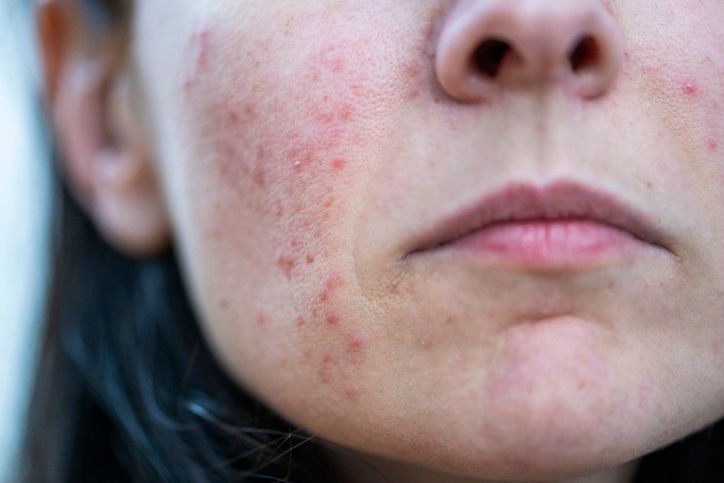Author: Natalie Ng|Updated: 22 May 2025
Both hyperpigmentation and melasma cause dark patches on your skin, but they show up for different reasons. Hyperpigmentation usually happens when your skin reacts to things like sun damage, injuries, or inflammation, creating dark spots that can appear anywhere on your body. Melasma tends to show up as symmetrical patches, often on the cheeks, forehead, or upper lip, and is often linked to hormonal changes like pregnancy or birth control. These skin conditions can look similar, but they don’t always respond the same way to treatment. Hyperpigmentation often fades with chemical peels, laser therapy, and topical treatments, while melasma can be more stubborn. Knowing what makes each condition different helps you pick the right plan for your skin. Keep reading to learn more about the causes, treatment options, and how to keep your skin healthy.

Causes of Hyperpigmentation and Melasma
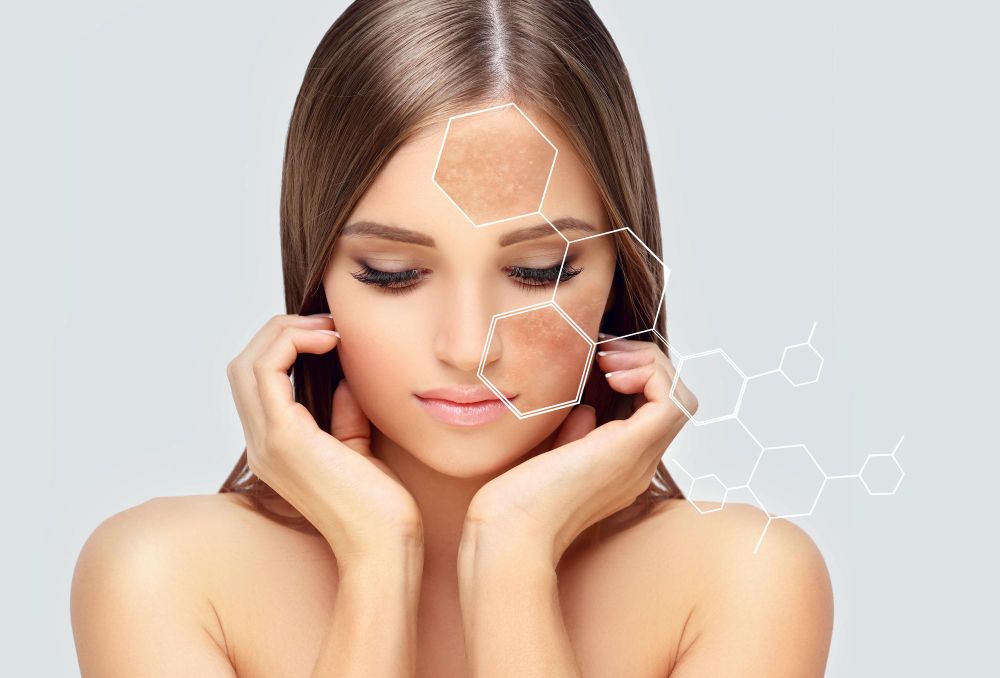
Triggers of hyperpigmentation
Hyperpigmentation happens when your skin makes extra melanin. This usually happens after skin trauma, irritation, or inflammation. Acne scars, skin injuries, burns, or sun exposure are common triggers. Your skin produces more pigment in response to these factors, which leaves dark spots, also known as post inflammatory hyperpigmentation. These darkened areas can appear anywhere on your body, especially in places exposed to the sun.
Triggers of melasma
Melasma is closely linked to hormonal changes. Women who are pregnant, using birth control pills, or on hormone replacement therapy are more likely to develop melasma. This skin condition often appears during pregnancy, which is why it’s sometimes called the "mask of pregnancy." Melasma usually shows up as symmetrical grey brown patches on the cheeks, forehead, or upper lip. Hormonal fluctuations, combined with prolonged sun exposure, make melasma worse. Darker skin types are more prone to melasma because they naturally have more melanin production.
Impact of sun exposure on both conditions
Sun exposure can make both hyperpigmentation and melasma worse. UV rays and visible light increase melanin synthesis, which darkens existing patches and encourages new ones. That’s why it’s important to wear protective clothing, use sunscreen daily, and limit direct sun exposure. Managing sun damage is a key part of caring for skin affected by hyperpigmentation melasma and preventing further dark spots.

Key Differences in Appearance and Location
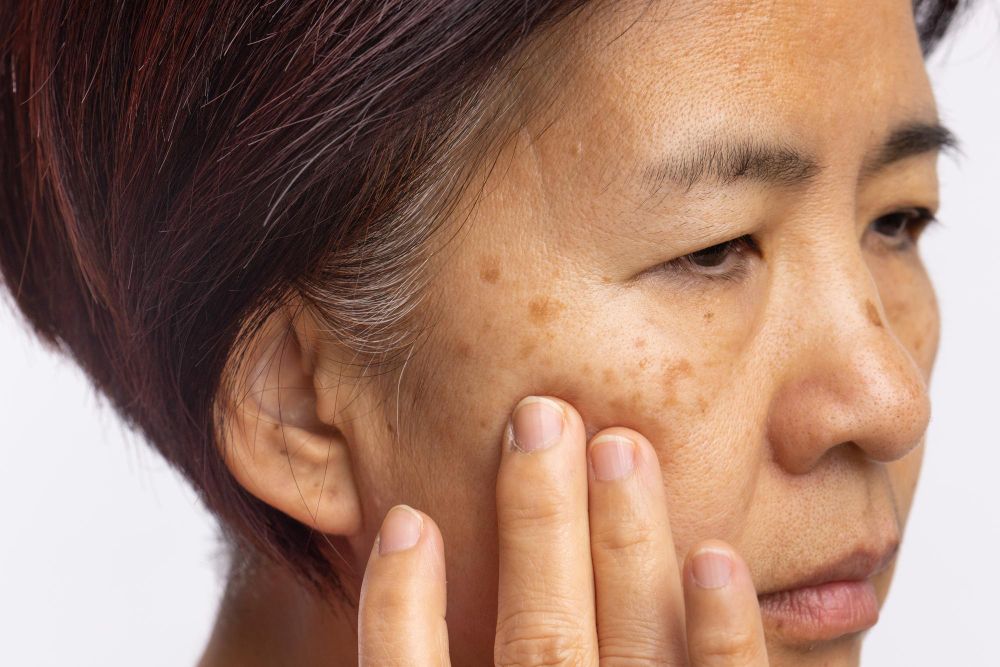
Appearance of hyperpigmentation
Hyperpigmentation shows up as irregular dark patches. These can appear anywhere on the body, including sun-exposed areas like the face, neck, hands, and arms. The size, shape, and intensity of these patches can vary. Dark spots from hyperpigmentation often result from skin trauma, sun damage, or skin inflammation.
Appearance of melasma
Melasma looks different. It forms larger, symmetrical patches that often appear on both sides of the face. The most common spots are the cheeks, forehead, upper lip, and bridge of the nose. The color of melasma patches ranges from light brown to grey brown, and the borders are usually more defined. Hormonal changes can make melasma more noticeable, especially during pregnancy or when taking birth control pills.
Changes in color intensity
Hyperpigmentation often stays the same shade over time, unless triggered by more sun exposure or skin irritation. Melasma, on the other hand, can darken or fade depending on hormonal fluctuations. It may become more visible during pregnancy, with hormonal therapy, or when using birth control pills. Both skin conditions can get worse with prolonged sun exposure.
Read More
Book Now to Experience
PicoCure Pigmentation Removal Treatment
1 Minute Self-Registration
Date should not be before minimal date

Treatment Options and Their Effectiveness
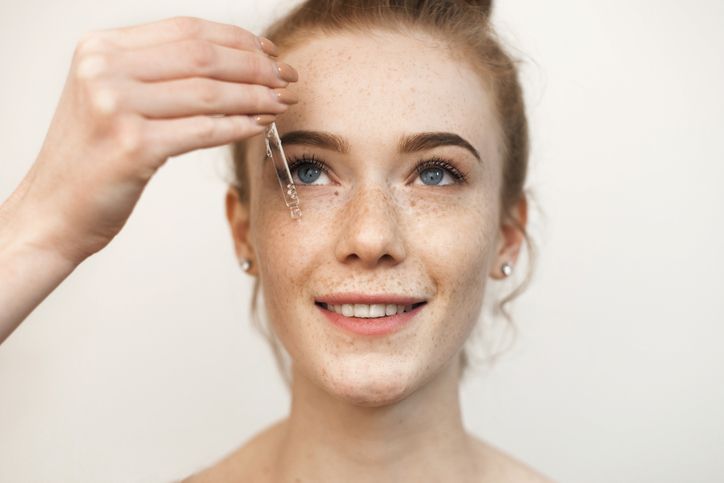
Treatment options for hyperpigmentation
Hyperpigmentation often responds well to a variety of treatments. Topical creams with ingredients like vitamin C, kojic acid, azelaic acid, and hydroquinone can help lighten dark spots and even skin tone. Chemical peels using salicylic acid or glycolic acid can also speed up results by removing the top layers of skin pigment. Laser treatments and intense pulsed light (IPL) can be effective for stubborn patches, especially those caused by sun damage.
Hyperpigmentation from post inflammatory hyperpigmentation or sun exposure usually fades with proper care and time, often within a few months.
Treatment options for melasma
Melasma is usually harder to treat. It often needs a combination of topical treatments, medical treatments, and lifestyle adjustments. Prescription creams with hydroquinone, tranexamic acid, or a triple combination of hydroquinone, tretinoin, and a mild steroid are common options. These can help lighten melasma patches but require consistent use and patience.
Laser therapy and chemical peels can help some cases of melasma, but they must be used carefully. Aggressive treatments can make melasma worse, especially in darker skin types. Microneedling, light treatments, and gentle peels like azelaic acid are safer choices for many people.
Melasma often needs long-term care. Even after treatment, melasma patches can return if you don’t protect your skin from UV rays, visible light, and hormonal triggers like birth control pills.
Importance of sun protection in treatment
Sun protection is key for treating both hyperpigmentation and melasma. Daily use of a broad-spectrum sunscreen, wearing protective clothing, and limiting direct sun exposure can prevent dark spots from coming back and stop new patches from forming. Without proper sun protection, treatment results may fade, and skin pigmentation can return.

Ingredients That Help with Hyperpigmentation and Melasma

Topical ingredients that reduce dark spots
Certain skincare ingredients are known to help lighten dark spots and melasma patches by targeting melanin production and reducing skin inflammation. Vitamin C is a powerful antioxidant that can brighten skin, reduce sun damage, and even out skin tone over time. Kojic acid and azelaic acid also help by slowing down melanin synthesis and fading darkened areas. Tranexamic acid has become popular in treating melasma, as it targets the pigment responsible for dark patches. Niacinamide, a form of vitamin B3, can improve skin barrier health and reduce pigmentation in sun exposed areas.
Topical creams that combine these ingredients are often used alongside professional treatments like laser therapy, chemical peels, and microneedling for best results. While some treatments show quick improvements, others—especially for melasma—require patience, as the condition can return with hormonal fluctuations or prolonged sun exposure.
Ingredients that should be used with care
Some treatments, like hydroquinone and topical steroids, can be effective for hyperpigmentation and melasma, but they should be used under medical supervision. Overuse or incorrect application may cause skin irritation or worsen dark patches, especially in darker skin types. It’s important to follow professional advice when using these stronger treatments.
Book Now to Experience
PicoCure Pigmentation Removal Treatment
1 Minute Self-Registration
Date should not be before minimal date

Daily Skincare Routine for Preventing Hyperpigmentation and Melasma
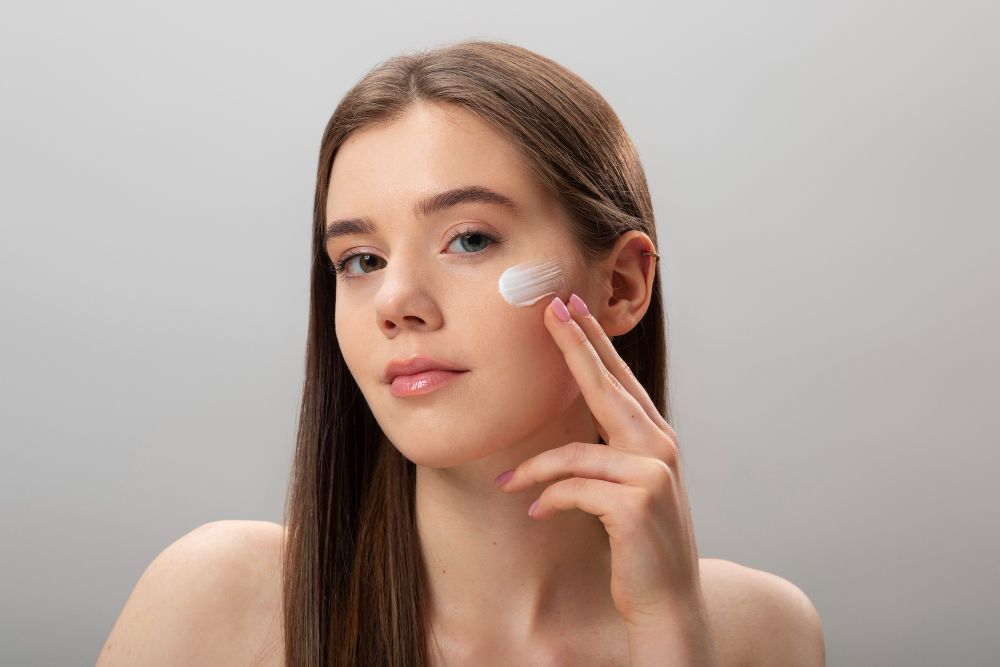
Morning skincare tips for even skin tone
Start your morning routine with a gentle cleanser that won’t strip your skin. Follow with a vitamin C serum to help brighten dark spots and protect against sun damage. Apply a broad-spectrum sunscreen of SPF 30 or higher every day, even if staying indoors, as UV rays and visible light can still reach your skin. For extra protection, use physical sun blockers like hats and sunglasses, especially on areas like your cheeks, forehead, and upper lip where melasma often appears. Reapply sunscreen every two hours if you’re spending time outdoors.
Evening skincare tips for skin health
At night, cleanse your skin thoroughly to remove makeup, sunscreen, and dirt. Use a serum or cream that targets pigmentation, such as one with azelaic acid, kojic acid, tranexamic acid, or niacinamide. These ingredients help reduce melanin production and lighten dark patches. A gentle exfoliant like a mild chemical peel (salicylic acid or glycolic acid) can also help by removing dead skin cells and promoting an even skin tone. Finish your routine with a moisturizer to keep the skin barrier healthy. For melasma, use any prescription topical agents exactly as directed by your dermatologist.

Prevention Strategies for Hyperpigmentation and Melasma
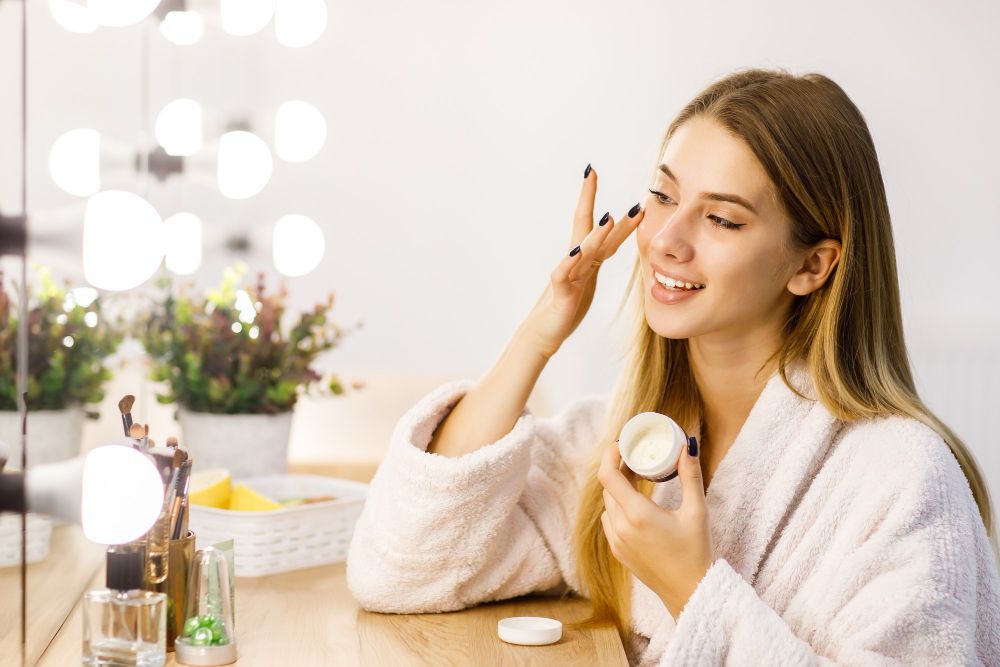
Daily habits to prevent hyperpigmentation and melasma
Sun protection plays a major role in preventing both hyperpigmentation and melasma. Applying a broad-spectrum sunscreen of SPF 30 or higher every day, even when indoors, is essential. Sunscreen helps block harmful UV rays and visible light that can trigger melanin production and worsen existing dark patches. Reapplying sunscreen every two hours when spending time outdoors is important, especially on sun exposed areas like the face, neck, and hands. Wearing protective clothing like wide-brimmed hats, sunglasses, and long sleeves also adds an extra layer of defense against sun damage.
Hormonal factors to manage for melasma
Melasma is often triggered by hormonal fluctuations. Pregnant women and those taking birth control pills or hormone replacement therapy are more prone to developing melasma patches. If you’re managing hormonal factors, it’s important to speak with your healthcare provider about options that may lower your risk of worsening melasma.
Skincare tips for healthy skin and preventing dark spots
Keeping your skin healthy reduces the chance of developing dark spots from skin injuries or inflammation. Using gentle skincare products that contain ingredients like vitamin C, kojic acid, niacinamide, or azelaic acid can help prevent melanin buildup and maintain an even skin tone. Avoid picking at pimples or wounds, as this can lead to post inflammatory hyperpigmentation. Be mindful when trying new products—always patch test to avoid skin irritation that can trigger pigmentation.
Keeping your skin moisturized supports skin barrier health and lowers the chance of irritation. Limit exposure to harsh chemicals, excessive heat, or intense skin treatments that may cause skin trauma.
When to see a dermatologist
If you notice dark patches that don’t improve after using over-the-counter treatments for two to three months, it may be time to see a dermatologist. A skincare professional can help diagnose whether you’re dealing with hyperpigmentation, melasma, or another skin condition. They can also create a treatment plan that suits your skin tone, skin type, and the type of discoloration you have.
Signs that need medical attention
You should also seek professional help if dark spots change in size, shape, or color, or if they have irregular borders. Melasma that worsens despite using sun protection and topical treatments may need a more advanced approach. Other signs to watch for include itching, burning, or discomfort in the affected areas, which may suggest an underlying issue.
Special care during pregnancy and hormonal changes
If you are pregnant or planning to become pregnant, it’s important to speak with a healthcare provider before starting any melasma treatment. Hormonal fluctuations during pregnancy can make skin more sensitive, and not all treatments are safe during this time. A dermatologist can recommend safe options to help manage skin pigmentation without harming your skin health or the baby.
Book Now to Experience
PicoCure Pigmentation Removal Treatment
1 Minute Self-Registration
Date should not be before minimal date

How PicoCure Pigmentation Removal Treatment Can Help with Hyperpigmentation and Melasma
PicoCure Pigmentation Removal Treatment is an advanced laser solution designed to treat stubborn skin pigmentation issues like hyperpigmentation and melasma. While hyperpigmentation and melasma both involve dark patches of skin, they can be tough to treat—especially when hormonal factors or prolonged sun exposure make the problem worse. That’s where PicoCure comes in.
How PicoCure targets skin pigmentation
PicoCure uses a unique combination of picosecond and nanosecond laser technology. The laser energy works fast, breaking down pigment clusters in both deep and superficial skin layers. PicoCure uses quadruple wavelengths (1064nm, 650nm, 585nm, and 532nm) to target melanin responsible for dark spots, age spots, liver spots, and melasma patches. By shattering pigment into fine particles, the body can naturally remove the pigment through its metabolism.
Unlike some treatments that can irritate skin or cause rebound pigmentation, PicoCure’s laser pulses are extremely fast—1000 times faster than traditional lasers. This allows the energy to enter and leave the skin quickly, reducing the risk of burns, irritation, or damage to the surrounding skin.
Benefits of PicoCure for melasma and hyperpigmentation
PicoCure not only targets and removes dark patches but also stimulates collagen production, helping improve overall skin health. By promoting new collagen growth, the treatment can tighten skin, shrink pores, brighten skin tone, and improve skin texture. Many people see an improvement in acne scars, dark spots, and uneven skin tone after a course of sessions.
This non-invasive treatment is safe for a wide range of skin types, including darker skin tones that may react poorly to traditional laser treatments. Most people feel little to no discomfort during the session, and there is no downtime—making it an easy addition to your skincare routine. After a PicoCure session, you can return to your day as usual, though it’s important to keep using sun protection to maintain results.
If you’re looking for a way to treat hyperpigmentation, melasma, and other dark spots with a safe, effective laser treatment, PicoCure is a strong option to consider.
Book your consultation today and discover how PicoCure can help you achieve an even skin tone and healthy, glowing skin.
New Beauty's PicoCure Pigmentation Removal Treatment
Lifestyle Tips For Healthy Skin and Prevent Pigmentation

Avoid sun exposure and protect skin
Limit time spent in direct sun exposure, especially during peak hours between 10 a.m. and 4 p.m. Wearing protective clothing like wide-brimmed hats and long sleeves can reduce UV damage. Make sun protection part of your daily habits—this helps prevent melasma patches and dark spots from returning.
Address hormonal factors
For women, hormonal fluctuations play a major role in developing melasma. If you’re using birth control pills or hormone replacement therapy, talk to your doctor about potential impacts on skin pigmentation. Pregnant women may also see melasma patches appear or darken—this is common, and it’s often called the "mask of pregnancy."
Care for skin after trauma or irritation
Hyperpigmentation often develops after skin trauma like cuts, burns, acne, or irritation. Avoid picking at blemishes and treat any skin injuries gently. After procedures like chemical peels or laser therapy, follow post-treatment instructions to avoid skin inflammation that can lead to darkened patches.
By combining a skincare routine that fits your skin type with simple lifestyle habits, you can improve your skin, maintain an even skin tone, and reduce the risk of developing or worsening hyperpigmentation and melasma.
Book Now to Experience
PicoCure Pigmentation Removal Treatment
1 Minute Self-Registration
Date should not be before minimal date
FAQ
Does prolonged sun exposure make hyperpigmentation and melasma worse?
Yes, prolonged sun exposure can make both hyperpigmentation and melasma worse. UV rays and visible light stimulate melanin production, which can darken existing spots and create new patches. Wearing protective clothing, using broad-spectrum sunscreen daily, and limiting time in direct sun exposure can help prevent pigmentation from getting darker.
Can I use topical creams for hyperpigmentation and melasma together?
Some topical creams can help both conditions, but it’s important to choose the right ones for your skin type and concern. Ingredients like vitamin C, azelaic acid, and kojic acid can help lighten dark spots and melasma patches, while products with tranexamic acid or topical steroids are often recommended for melasma specifically. It’s best to consult a professional if you’re unsure which combination is safe, especially if you have sensitive or darker skin types.
Are laser treatments safe for darker skin tones?
Laser treatments like PicoCure are designed to be safer for a wide range of skin tones, including darker skin types. Traditional lasers can sometimes cause skin irritation, post inflammatory hyperpigmentation, or worsen dark patches in darker skin. PicoCure uses picosecond and nanosecond laser energy with rapid pulses that reduce the risk of burns, irritation, and rebound hyperpigmentation. Always choose treatments that are safe and effective for your specific skin tone.
What lifestyle habits can help prevent melasma patches?
Managing hormonal fluctuations, using sun protection daily, and avoiding direct sun exposure are key lifestyle habits that can help prevent melasma patches. Limiting the use of birth control pills or discussing alternatives with your doctor may help, as hormonal changes are a major trigger for melasma. Wearing protective clothing like wide-brimmed hats and sunglasses can also help protect your skin from UV radiation and visible light that can worsen melasma.
Can hyperpigmentation and melasma develop after skin trauma?
Yes, skin trauma—such as acne scars, burns, or injuries—can lead to post inflammatory hyperpigmentation. In melasma, skin irritation or treatments that inflame the skin can sometimes make dark patches worse, especially in people with darker skin types. It’s important to treat skin gently, use mild skincare products, and follow a proper skincare routine to prevent skin irritation and keep your skin healthy.
Recommended Articles
COPYRIGHT© NEW BEAUTY MANAGEMENT LIMITED 2025. ALL RIGHT RESERVED.

